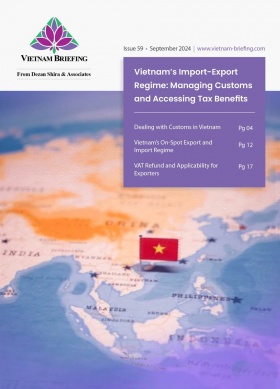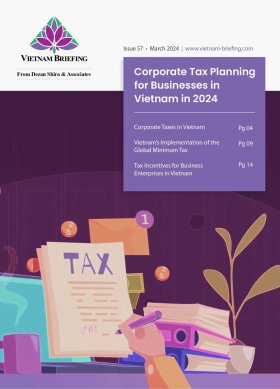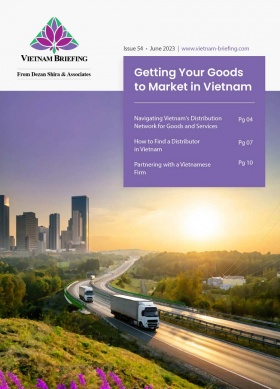Vietnam Updates Criteria for High-Tech Investment Projects
New criteria for high-tech investments in Vietnam have come into effect since December 23, 2024, following the implementation of a new circular. These criteria specifically address projects related to high-tech research and development facilities, as well as high-tech applications in producing high-tech goods. This article examines the updated requirements for the reference of businesses and investors.
In November 2024, Vietnam’s Minister of Science and Technology sanctioned Circular 08/2024/TT-BKHCN, providing explicit criteria for high-technology (high-tech) investment projects.
Circular 08/2024/TT-BKHCN specifies several provisions prescribed under Decree 10/2024/ND-CP, dated February 1, 2024, on high-tech industrial zones. These provisions outline criteria for the following high-tech investment projects, which are:
- Projects on high-tech research and development facilities; and
- Projects applying high technology to produce high-tech products.
The Circular applies to all state agencies, organizations, and individuals involved in implementing the above high-tech investment projects.
For more information read: Vietnam Issues Decree 10/2024/ND-CP to Attract More High-Tech Investments
Transitional terms
Circular 08/2024/TT-BKHCN will take effect on December 23, 2024, and will annul Decision No. 27/2006/QD-BKHCN dated December 18, 2006, which established the regulations on standards for determining high-tech product manufacturing projects.
Project investors have the option to either continue complying with the provisions of Decision No. 27/2006/QD-BKHCN or to follow the guidelines outlined in this Circular to complete their documentation, subject to two conditions:
- They must have submitted their applications for investment administrative procedures before the effective date of this Circular but have not yet received the results of those procedures; and
- The Management Board of the high-tech park is currently reviewing the standards established by Decision No. 27/2006/QD-BKHCN.
Principles for high-tech investment projects
Under Circular 08/2024/TT-BKHCN, projects involving high-tech research and development facilities and high-tech applications in producing high-tech goods must adhere to the principles outlined in Article 28 of Decree 10/2024/ND-CP. These principles include:
- Compliance with laws: The objectives and operations of an investment project must align with the tasks designated for the hi-tech park as defined in the Law on High Technologies.
- Environmental Protection: Respective projects must be implemented with environmentally friendly practices and measures to promote resource efficiency.
- Alignment with Planning: Respective projects must conform to the planning and capacity for providing technical and social infrastructure of the hi-tech park, as well as comply with relevant laws.
- Financial Capacity: Investors proposing investment projects must demonstrate their financial capacity or secure other legal funding sources to meet the capital requirements for the project’s construction, maintenance, and operation.
- Technological and Managerial Capacity: Investors must possess the necessary technological and managerial skills to ensure that the construction and implementation of investment projects adhere to the established schedule and plan.
Criteria for different types of high-tech investment projects in Vietnam
In addition to the common principles mentioned above, high-tech investment projects in Vietnam must meet specific criteria depending on their type. These requirements are partly promulgated under Decree 10/2024/ND-CP, then further extended by Circular 08/2024/TT-BKHCN.
|
Criteria |
High-tech research and development facilities |
High-tech application for the production of high-tech products |
|
Overall |
|
|
|
Expenditure |
|
|
|
Personnel |
|
|
|
Technical application |
|
|
|
Technologies |
|
|
Article 5: R&D expenditure for high-tech investment projects
According to Article 5 of Circular 08/2024/TT-BKHCN, expenditures related to research and development (R&D) activities of high-tech investment projects include the following annual costs for investment projects:
Annual depreciation
This includes the depreciation of technical infrastructure that directly supports R&D activities, such as research, experimental, testing facilities, equipment, sample products, software, documents, data, and information used for research.
Annual expenditures for routine R&D activities
This category covers salaries and related expenses (including bonuses, allowances, travel expenses, and business trip costs) for employees directly involved in the R&D activities. Additional costs may include:
- Remuneration for experts who review or evaluate research results;
- Expenses for seminars and scientific conferences related to R&D;
- Costs for renting facilities and equipment for research;
- Expenses for hiring inspections of R&D products;
- Maintenance and repair costs for technical infrastructure used in R&D; and
- Expenses for purchasing tools, supplies, raw materials, chemicals, energy, communication, stationery, labor protection equipment, and other perishable items needed for R&D.
Annual training expenses
This includes costs for long-term or short-term training for employees directly involved in the R&D activities, either domestically or abroad. It also covers expenses for collaboration, sponsorship, and support for training and research activities, such as scholarships and provision of equipment and machinery for scientific and technological organizations and training institutions in Vietnam.
Expenses for intellectual property rights and technology transfer
This includes costs associated with acquiring intellectual property rights and technology transfer for which a competent state agency has issued a Certificate of Registration (except in cases where the law on technology transfer specifies that registration is not required). These expenses also cover the costs of establishing intellectual property rights for intangible assets resulting from the investment project’s R&D activities.
Additionally, Article 5 promulgates the expenses that are not counted as costs for R&D activities of high-tech applications to produce high-tech products. These expenses include:
- Costs for product quality testing or periodic testing of raw materials, materials, fuel, and energy not related to research and development;
- Costs for periodic data collection not related to research and development;
- Costs for efficiency investigation or management research; and
- Costs for marketing and sales advertising research.
Benefits of investing in high-tech investments in Vietnam
Circular 08/2024/TT-BKHCN, detailing clear criteria for high-tech investment projects, is a significant addition to Decree 10/2024/ND-CP. Investors participating in these initiatives will benefit from several advantages, such as exemptions from land lease payments and reimbursement for costs related to land clearance. They will also have access to favorable interest rates on loans and available capital within established legal guidelines to support their projects.
Moreover, Decree 10/2024/ND-CP mandates that local governments develop appropriate living spaces and social infrastructure near high-tech parks to accommodate the workforce. These developments can be financed through public-private partnerships (PPP) or private investments, making these areas more attractive to potential investors.
Additionally, manufacturing and export companies operating in these parks will receive export tax exemptions or reductions comparable to the benefits offered in non-tariff zones.
About Us
Vietnam Briefing is published by Asia Briefing, a subsidiary of Dezan Shira & Associates. We produce material for foreign investors throughout Asia, including ASEAN, China, and India. For editorial matters, contact us here and for a complimentary subscription to our products, please click here. For assistance with investments into Vietnam, please contact us at vietnam@dezshira.com or visit us at www.dezshira.com.
Dezan Shira & Associates assists foreign investors throughout Asia from offices across the world, including in Hanoi, Ho Chi Minh City, and Da Nang. We also maintain offices or have alliance partners assisting foreign investors in China, Hong Kong SAR, Dubai (UAE), Indonesia, Singapore, Philippines, Malaysia, Thailand, Bangladesh, Italy, Germany, the United States, and Australia.
- Previous Article Vietnam Announces Master Plan on Coastal Resources: Focus on Sustainable Exploitation and Usage
- Next Article Vietnam National Assembly Approves Law on Data








